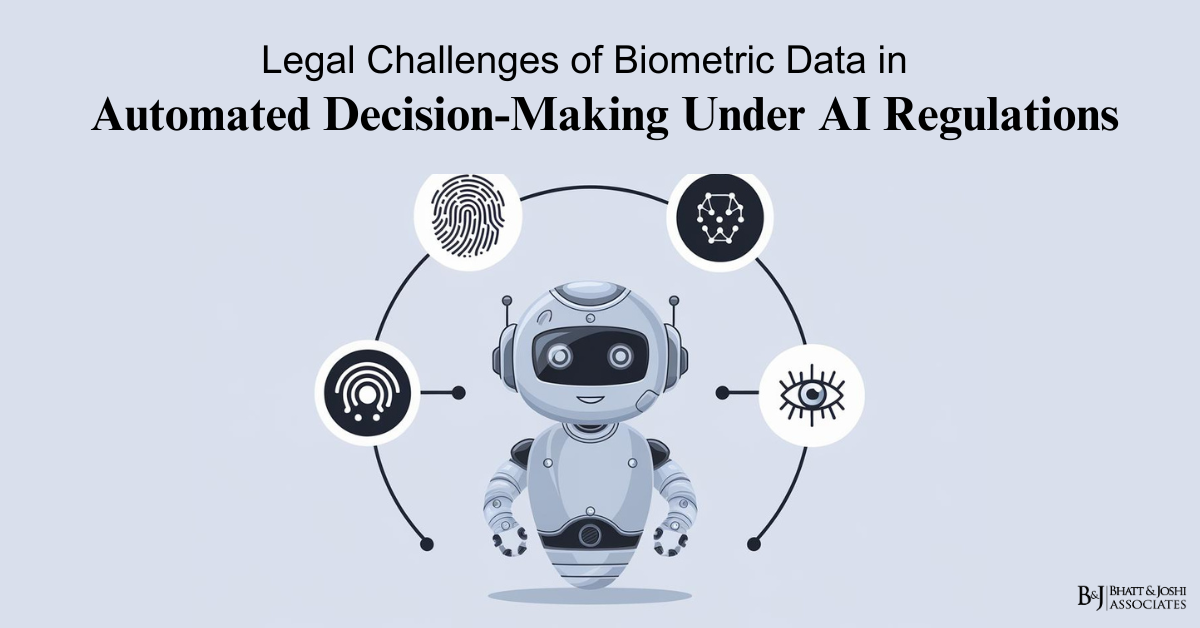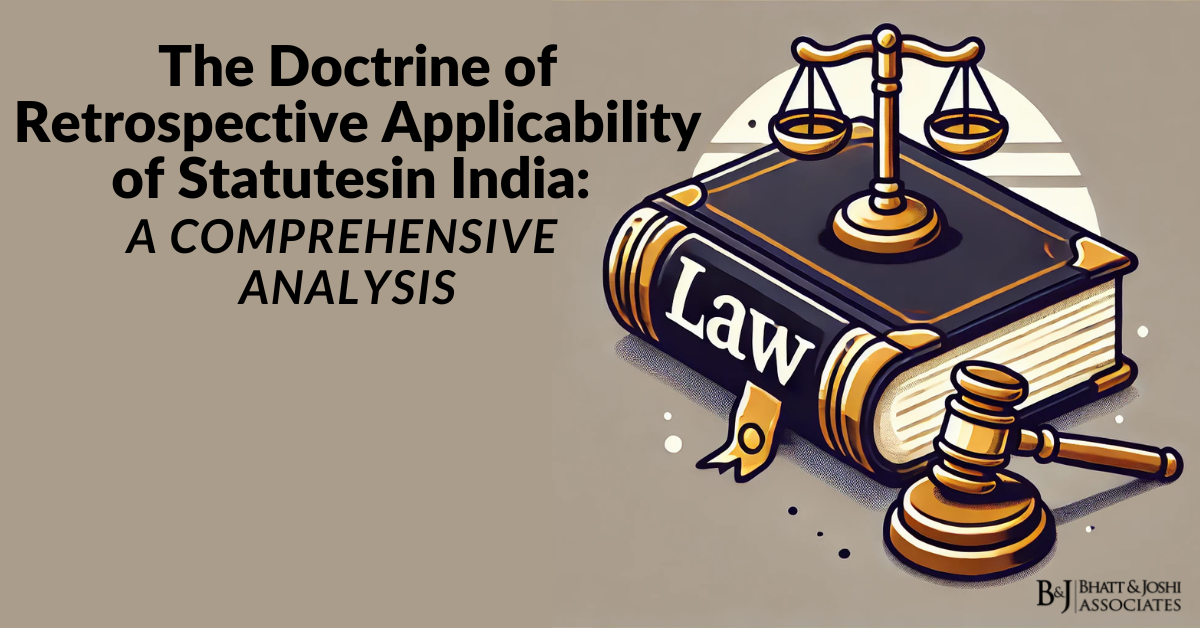Introduction
The integration of biometric data into automated decision-making processes, particularly under the framework of artificial intelligence (AI), represents a significant advancement in technology. These processes have found applications across a wide range of sectors, including law enforcement, healthcare, finance, and employment. By leveraging AI, systems can analyze biometric data such as facial recognition, fingerprints, and voice patterns to make decisions that affect individuals in profound ways—from determining eligibility for services to identifying potential security threats. However, the use of biometric data in AI-driven decision-making also raises complex legal challenges, especially concerning privacy, data protection, discrimination, transparency, and accountability.
As AI technologies become more sophisticated and widespread, the legal frameworks governing the use of biometric data in automated decision-making are struggling to keep pace. These challenges are compounded by the fact that biometric data is inherently sensitive and closely tied to an individual’s identity, making it subject to strict legal protections. This article provides an in-depth analysis of the legal challenges associated with the use of biometric data in automated decision-making under AI regulations. It explores the regulatory frameworks, the risks posed to individuals’ rights, and the broader implications for society.
The Integration of Biometric Data in Automated Decision-Making
Automated decision-making refers to the process by which decisions are made by automated systems without human intervention. In the context of AI, these decisions are typically based on the analysis of large datasets, including biometric data. Biometric data is unique to each individual and includes identifiers such as fingerprints, facial images, iris patterns, and voiceprints. When integrated into AI systems, biometric data can enhance the accuracy and efficiency of decision-making processes by providing precise and reliable information about individuals.
For example, in law enforcement, AI systems that analyze facial recognition data can be used to identify suspects in real-time, improving the speed and accuracy of criminal investigations. In healthcare, AI-driven systems can analyze biometric data to detect early signs of disease or to personalize treatment plans based on an individual’s genetic profile. In finance, biometric data can be used to authenticate users and prevent fraud, while in employment, it can be used to verify the identity of employees or to monitor their performance.
Despite these benefits, the use of biometric data in automated decision-making also poses significant risks, particularly concerning the protection of individual rights. The integration of biometric data into AI systems raises concerns about privacy, data security, discrimination, and the lack of transparency and accountability in decision-making processes. These concerns are exacerbated by the fact that biometric data is often collected and processed without individuals’ explicit consent or awareness, leading to potential violations of data protection laws.
Regulatory Frameworks Governing the Use of Biometric Data in Automated Decision-Making
The legal frameworks that govern the use of biometric data in automated decision-making vary significantly across different jurisdictions. These frameworks are primarily concerned with data protection, privacy, and the regulation of AI technologies. However, the rapid development of AI and the increasing use of biometric data in decision-making processes have highlighted gaps and ambiguities in existing regulations.
Data Protection and Privacy Laws
Data protection and privacy laws play a crucial role in regulating the use of biometric data in automated decision-making. Biometric data is often classified as “sensitive” or “special category” data under data protection laws, meaning that its collection, processing, and use are subject to stricter legal requirements than other types of personal data.
In the European Union, the General Data Protection Regulation (GDPR) provides a comprehensive legal framework for the protection of personal data, including biometric data. Under the GDPR, the processing of biometric data for the purpose of uniquely identifying an individual is generally prohibited unless specific conditions are met, such as the individual’s explicit consent or the necessity of the processing for reasons of substantial public interest. The GDPR also grants individuals the right not to be subject to decisions based solely on automated processing, including profiling, that produce legal effects concerning them or significantly affect them, unless certain conditions are met.
The GDPR’s provisions on automated decision-making and profiling are particularly relevant in the context of AI systems that use biometric data. These provisions require that individuals be informed about the existence of automated decision-making, the logic involved, and the significance and consequences of such processing. Additionally, individuals have the right to obtain human intervention, to express their point of view, and to contest the decision.
In the United States, data protection laws governing the use of biometric data in automated decision-making are less comprehensive than in the EU. While there is no federal equivalent to the GDPR, certain state laws, such as the Illinois Biometric Information Privacy Act (BIPA), provide specific protections for biometric data. BIPA imposes strict requirements on private entities that collect and use biometric data, including obtaining informed consent, providing notice of the purpose and duration of data collection, and establishing guidelines for data retention and destruction. However, the applicability of BIPA and similar state laws to AI-driven automated decision-making is still a matter of legal interpretation and ongoing litigation.
AI-Specific Regulations
As AI technologies continue to evolve, there is growing recognition of the need for AI-specific regulations that address the unique challenges posed by the use of AI in automated decision-making, particularly when it involves biometric data. These regulations aim to ensure that AI systems are developed and deployed in a manner that is ethical, transparent, and accountable.
In April 2021, the European Commission proposed the Artificial Intelligence Act (AI Act), which aims to establish a comprehensive regulatory framework for AI in the EU. The AI Act classifies AI systems into different risk categories, ranging from “unacceptable risk” to “high risk” and “limited risk,” with corresponding regulatory requirements. AI systems that involve the processing of biometric data for the purpose of automated decision-making, particularly those used in law enforcement, border control, and employment, are classified as high-risk and are subject to stringent regulatory requirements.
These requirements include mandatory risk assessments, transparency obligations, human oversight, and accountability measures. The AI Act also includes provisions that prohibit the use of certain AI systems that pose an unacceptable risk to fundamental rights, such as AI-driven social scoring systems and remote biometric identification systems used in public spaces by law enforcement authorities.
In the United States, AI-specific regulations are still in the early stages of development. However, there have been several legislative initiatives at both the federal and state levels aimed at regulating AI technologies, particularly in the context of biometric data. For example, the Algorithmic Accountability Act, introduced in the U.S. Congress in 2019, would require companies to conduct impact assessments of automated decision-making systems that involve biometric data to evaluate their potential risks and biases. Although the bill has not yet been enacted, it reflects a growing awareness of the need for regulatory oversight of AI-driven decision-making.
Challenges of Biometric Data in AI-Driven Automated Decision-Making
The use of biometric data in AI-driven automated decision-making presents a range of legal and ethical challenges. These challenges are primarily related to the protection of privacy, the risk of discrimination and bias, the lack of transparency and accountability, and the potential for abuse of power.
Privacy and Data Protection Risks
One of the most significant legal challenges associated with the use of biometric data in automated decision-making is the risk of privacy violations and data breaches. Biometric data is inherently sensitive, as it is uniquely tied to an individual’s identity and cannot be easily changed or revoked if compromised. The collection and processing of biometric data for automated decision-making often involve large-scale data analytics, which increases the risk of unauthorized access, data breaches, and misuse of personal information.
The integration of biometric data into AI systems also raises concerns about the scope and extent of data collection. AI-driven systems often rely on vast amounts of data to function effectively, leading to concerns about the potential for excessive data collection and surveillance. This is particularly concerning in contexts where biometric data is collected without individuals’ explicit consent or awareness, such as in public spaces or through remote biometric identification.
To address these privacy and data protection risks, regulatory frameworks such as the GDPR impose strict requirements on the processing of biometric data, including the need for explicit consent, data minimization, and the implementation of robust security measures. However, the rapid development of AI technologies and the increasing use of biometric data in decision-making processes have highlighted the need for further legal protections and safeguards.
Discrimination and Bias
The use of biometric data in AI-driven automated decision-making also raises significant concerns about discrimination and bias. Biometric technologies, such as facial recognition and voice analysis, have been shown to exhibit biases based on race, gender, and other characteristics. These biases can lead to discriminatory outcomes in automated decision-making processes, particularly in contexts such as law enforcement, employment, and access to services.
For example, facial recognition systems have been found to have higher error rates when identifying individuals with darker skin tones, women, and other marginalized groups. In the context of law enforcement, this can result in the wrongful identification of suspects or disproportionate targeting of certain communities. Similarly, in employment, AI-driven systems that analyze biometric data may inadvertently discriminate against certain groups, leading to biased hiring decisions or unfair treatment in the workplace.
To mitigate the risk of discrimination and bias in AI-driven decision-making, regulatory frameworks such as the AI Act in the EU require that AI systems be designed and developed in a manner that respects fundamental rights and prevents discriminatory outcomes. This includes conducting impact assessments to evaluate the potential risks and biases of AI systems, as well as implementing measures to ensure transparency, fairness, and accountability.
Transparency and Accountability
In the context of biometric data, the lack of transparency is particularly concerning because these data types are directly linked to an individual’s identity and have the potential for far-reaching consequences. When biometric data is used in AI-driven decision-making systems, individuals may not be fully informed about how their data is being collected, processed, and used, or about the criteria and algorithms that influence decisions made about them. This opacity can undermine trust in the system, especially if individuals are unable to understand the reasoning behind decisions that have significant impacts on their lives, such as being denied a service, flagged as a security risk, or subjected to increased surveillance.
The challenge of accountability in AI-driven automated decision-making is closely tied to transparency. If the decision-making process is not transparent, it becomes difficult to hold any party accountable for errors, biases, or discriminatory outcomes. For instance, when an AI system makes an erroneous or harmful decision based on biometric data, individuals may face significant barriers in identifying who is responsible for that decision—the AI developer, the organization deploying the system, or the entity that collected the biometric data. The issue is further complicated by the potential involvement of multiple parties, each of whom may contribute to different aspects of the decision-making process.
Regulatory frameworks like the GDPR attempt to address these challenges by imposing obligations on data controllers to ensure transparency and accountability in automated decision-making processes. Under the GDPR, individuals have the right to be informed about the existence of automated decision-making, the logic involved, and the significance and consequences of such processing. Additionally, individuals have the right to obtain human intervention, express their point of view, and contest decisions made by AI systems. However, the implementation of these rights in practice can be challenging, particularly in complex AI systems where the decision-making process is not easily interpretable.
Moreover, the European Union’s proposed AI Act seeks to further strengthen transparency and accountability by requiring high-risk AI systems, including those that use biometric data, to undergo rigorous risk assessments, adhere to strict transparency obligations, and be subject to human oversight. These measures are designed to ensure that individuals are adequately informed about how AI systems work, that the systems operate fairly, and that there is accountability for decisions made by AI.
Potential for Abuse and Surveillance
The integration of biometric data into AI-driven automated decision-making systems also raises concerns about the potential for abuse and the expansion of surveillance practices. Biometric data, by its nature, is uniquely linked to an individual and can be used to track and monitor individuals in ways that other forms of data cannot. When combined with AI, biometric data can be used to create detailed profiles of individuals, monitor their behavior, and make predictions about their actions and characteristics.
In the context of surveillance, the use of biometric data in AI systems can lead to the creation of pervasive monitoring systems that track individuals across different locations and contexts without their knowledge or consent. For example, facial recognition technology combined with AI can be used to identify and track individuals in public spaces, at protests, or during their daily activities, raising significant concerns about privacy and civil liberties. The potential for such systems to be used for mass surveillance by governments or private entities is a serious concern, particularly in authoritarian regimes or in contexts where there is a lack of strong legal protections for privacy and human rights.
The potential for abuse extends beyond surveillance. There is also the risk that AI-driven systems that rely on biometric data could be used to make decisions that discriminate against or disadvantage certain groups of people, either intentionally or unintentionally. For instance, an AI system that uses biometric data to assess the likelihood of someone committing a crime could reinforce existing biases and lead to discriminatory policing practices. Similarly, AI systems used in hiring or lending decisions that rely on biometric data could inadvertently discriminate against individuals based on characteristics such as race, gender, or disability.
To mitigate these risks, it is essential that regulatory frameworks include strong safeguards against the misuse of biometric data in AI-driven automated decision-making. This includes strict limitations on the collection and use of biometric data, robust oversight mechanisms, and effective remedies for individuals whose rights are violated. Additionally, there must be ongoing scrutiny and debate about the ethical implications of using biometric data in AI systems, particularly in contexts where the potential for abuse is high.
Legal Responses to the Challenges of Biometric Data in in Automated Decision-Making
In response to the legal challenges associated with the use of biometric data in AI-driven automated decision-making, various legal frameworks have been developed or proposed to regulate the use of these technologies. These legal responses aim to address the risks posed by biometric data in AI systems while ensuring that the benefits of these technologies can be realized in a manner that respects individual rights and upholds fundamental legal principles.
The Role of the GDPR and AI Act in the EU
The General Data Protection Regulation (GDPR) is one of the most comprehensive data protection laws globally and plays a critical role in regulating the use of biometric data in AI systems within the European Union. The GDPR’s provisions on data protection, automated decision-making, and individual rights provide a strong foundation for addressing many of the legal challenges associated with biometric data in AI.
Under the GDPR, the processing of biometric data is generally prohibited unless specific conditions are met, such as obtaining explicit consent from the individual or demonstrating that the processing is necessary for substantial public interest. This strict approach to biometric data processing helps to ensure that individuals’ rights are protected, and that the use of biometric data in AI systems is subject to rigorous scrutiny.
Additionally, the GDPR grants individuals the right not to be subject to decisions based solely on automated processing, including profiling, that produces legal effects or significantly affects them. This right is particularly relevant in the context of AI-driven automated decision-making and provides individuals with important protections against the potential harms of such systems.
The proposed AI Act in the EU further strengthens these protections by introducing specific regulations for high-risk AI systems, including those that use biometric data. The AI Act’s requirements for risk assessments, transparency, and human oversight are designed to ensure that AI systems are developed and deployed in a manner that is ethical, accountable, and aligned with fundamental rights. The AI Act also includes provisions that prohibit the use of certain AI systems that pose an unacceptable risk to individuals’ rights, such as remote biometric identification systems used in public spaces by law enforcement.
Emerging Legal Frameworks in the United States
In the United States, the legal framework for regulating the use of biometric data in AI-driven automated decision-making is still evolving. While there is no federal equivalent to the GDPR, several legislative initiatives have been proposed to address the challenges posed by AI technologies and the use of biometric data.
For example, the Algorithmic Accountability Act, introduced in Congress in 2019, would require companies to conduct impact assessments of automated decision-making systems that involve biometric data to evaluate their potential risks and biases. The proposed legislation reflects a growing recognition of the need for regulatory oversight of AI-driven decision-making, particularly in contexts where biometric data is used.
In addition to federal initiatives, several states have enacted biometric privacy laws, such as Illinois’ Biometric Information Privacy Act (BIPA). BIPA imposes strict requirements on private entities that collect, use, and store biometric data, including obtaining informed consent, providing notice of the purpose and duration of data collection, and establishing guidelines for data retention and destruction. While BIPA primarily applies to the private sector, its principles could inform future regulations governing the use of biometric data in AI systems more broadly.
International Perspectives and Global Standards
The challenges associated with the use of biometric data in AI-driven automated decision-making are not limited to any single jurisdiction. As AI technologies and biometric data are increasingly used in cross-border contexts, there is a growing need for international cooperation and the development of global standards.
International organizations such as the United Nations, the Organisation for Economic Co-operation and Development (OECD), and the International Organization for Standardization (ISO) have begun to address the ethical and legal implications of AI and biometric data. These organizations are working to develop guidelines and standards that promote the responsible use of AI technologies while protecting individual rights and ensuring fairness.
For example, the OECD’s AI Principles, adopted in 2019, emphasize the importance of transparency, accountability, and human rights in the development and deployment of AI systems. Similarly, ISO has developed standards for biometric data processing and AI systems that aim to ensure the security, accuracy, and fairness of these technologies.
The development of global standards is particularly important given the cross-border nature of AI technologies and biometric data. By establishing common principles and guidelines, international standards can help to ensure that the use of biometric data in AI systems is consistent, ethical, and aligned with fundamental rights across different jurisdictions.
Conclusion
The integration of biometric data into AI-driven automated decision-making systems offers significant benefits in terms of accuracy, efficiency, and security. However, it also presents complex legal and ethical challenges that must be carefully addressed to protect individual rights and uphold fundamental legal principles.
The use of biometric data in AI systems raises significant concerns about privacy, discrimination, transparency, and accountability. These concerns are compounded by the unique nature of biometric data, which is inherently sensitive and closely tied to an individual’s identity. As AI technologies continue to evolve and become more widespread, it is essential that legal frameworks keep pace with these developments to ensure that the use of biometric data in automated decision-making is subject to rigorous oversight and regulation.
Regulatory frameworks such as the GDPR and the proposed AI Act in the European Union provide a strong foundation for addressing many of the legal challenges associated with biometric data in AI. These frameworks emphasize the importance of transparency, accountability, and the protection of individual rights in the use of AI technologies. However, there is still work to be done to develop comprehensive legal protections in other jurisdictions, such as the United States, where the regulatory landscape is still evolving.
In addition to national and regional regulations, there is a growing need for international cooperation and the development of global standards to address the cross-border implications of AI and biometric data. By establishing common principles and guidelines, international standards can help to ensure that the use of biometric data in AI systems is consistent, ethical, and aligned with fundamental rights worldwide.
As we move forward, it is essential that policymakers, technologists, and society as a whole engage in ongoing dialogue about the legal and ethical implications of AI-driven automated decision-making and the use of biometric data. By doing so, we can harness the benefits of these technologies while safeguarding the rights and freedoms that are the cornerstone of democratic societies.














